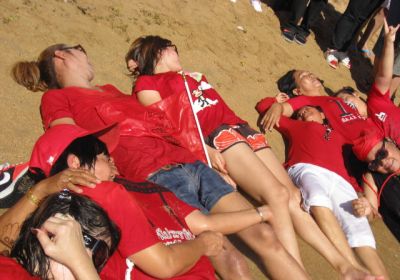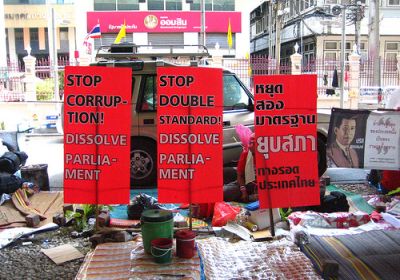It was obvious from the start that the aims of Thailand's military junta, which seized power last month, were not about a sincere attempt to restore peace between the two opposing sides in Thailand’s political crisis.
How could it be when the military were part of those who wanted to pull down the democratic system from the start?
The military staged an earlier coup in 2006, wrote a new, less democratic constitution, and appointed half the senate and most of the members of so-called independent bodies.
-
-
 Up to 20,000 supporters of the pro-democracy Red Shirt movement rallied at a concert in the Thailand seaside resort city of Pattaya on September 4. It was one the biggest mobilisations since the military bloodily dispersed the Red Shirts’ mass protest camp in Bangkok in May, killing 91 and injuring thousands more. Red Shirt leader and Puea Thai party MP Jatuporn Prompan called on people to place red roses outside prisons around the country on September 17. Hundreds of Red Shirt leaders and activists continue to be detained.
Up to 20,000 supporters of the pro-democracy Red Shirt movement rallied at a concert in the Thailand seaside resort city of Pattaya on September 4. It was one the biggest mobilisations since the military bloodily dispersed the Red Shirts’ mass protest camp in Bangkok in May, killing 91 and injuring thousands more. Red Shirt leader and Puea Thai party MP Jatuporn Prompan called on people to place red roses outside prisons around the country on September 17. Hundreds of Red Shirt leaders and activists continue to be detained. -
 Thai Prime Minister Abhisit Vejjajiva trumpeted that he was making an important initiative on May 3 to “solve” the political crisis. The country has been wracked by protests demanding the government — which was never elected — hold elections. The current government was installed after a military coup, far-right “Yellow Shirt” protests and judicial rulings that gave more power to the military. On May 3, Abhisit offered to dissolve parliament in September and hold elections on November 14. Previously, he had said he would not dissolve parliament until December.
Thai Prime Minister Abhisit Vejjajiva trumpeted that he was making an important initiative on May 3 to “solve” the political crisis. The country has been wracked by protests demanding the government — which was never elected — hold elections. The current government was installed after a military coup, far-right “Yellow Shirt” protests and judicial rulings that gave more power to the military. On May 3, Abhisit offered to dissolve parliament in September and hold elections on November 14. Previously, he had said he would not dissolve parliament until December. -
The following statement was released by the United Front for Democracy against Dictatorship (UDD), the organisation of the “Red Shirts”, on May 6. It is abridged from wdpress.blog.co.uk. *** UDD leaders have again debunked speculation that the Red Shirt rally at Ratchaprasong will soon be packing up and the protesters returning home.